Sink the Bismarck! (1960)
Directed by: Lewis Gilbert
Written by: C.S. Forester, Edmund H. North
Starring: Carl Möhner, Dana Wynter, Kenneth More, Laurence Naismith
UK
AVAILABLE ON BLU-RAY: 11th MARCH, from EUREKA ENTERTAINMENT
RUNNING TIME: 97 mins
REVIEWED BY: Dr Lenera, Official HCF Critic
London during the Blitz: Captain Jonathan Shepard takes command of the Admiralty’s war room below Whitehall. He seems a martinet, but the First Sea Lord is glad to have such an unemotional tactician in charge. The Bismarck breaks out into the North Sea to attack British ships, its Captain Lindemann much hampered by having on board the Nazi propagandist Admiral Lutjens, who expects miracles from the ship and places prestige over sound warfare. Two destroyers makes contact with The Bismarck, but HMS Hood, one of England’s best ships, is obliterated in one shot. Now Shepard will need all the luck he has, and must commit every ship available in a desperate struggle to put an end to the surface raider….
Out of all the James Bond film directors, it’s probably Lewis Gilbert who has the best resume outside of the 007 movies he did, with Alfie, Reach For The Skies, Carve Her Name With Pride and Educating Rita still well regarded and popular titles, even if more people have undoubtedly seen his three most over the top contributions to the Bond saga. Sink The Bismarck! is another highly thought of effort from this director, though in one of the film genres I’m probably least experienced in and knowledgeable about, and I had the distinct feeling that [my apologies to Eureka Entertainment], I’d find it a bit dull seeing as much of it takes place in the British naval command headquarters. But I was totally wrong. This is a very riveting piece of work that holds you in its iron grasp even if you know how the events end – and I would imagine that lot of readers do so I’m not going to bother avoiding spoilers in this case. What’s important is how the events of perhaps the last fight between capital ships and one of World War 2’s most important are told, and for the most part they’re told really well, adopting a low-key, almost documentary style for much of the time that makes things feel very authentic. Only a few seams show in the realistic battle scenes, while it’s amazing how much tension Gilbert is able to wring from fairly calm war room planning, maneuvering and giving of orders. Devoid of flag waving, it’s further strengthened by a secondary theme of grief and the need to reach out which adds a human touch and allows Kenneth More, a performer who’s always struck me as being rather limited, to really show his acting chops.
It’s credited as being based on the 1958 book The Last Nine Days of the Bismarck by C.S. Forester, though he actually wrote the story as a screen treatment for 20th Century Fox before even writing the book, screenwriter Edmund H. North then asked to develop it into a screenplay. He also invented the British destroyer HMS Solent and some minor things. He intended to make the real naval officer in charge of the operation to destroy The Bismarck the hero, but he wanted nothing to do with a dramatisation of his part, so producer John Brabourne replaced him with a fictional character. He was though able to get Edward R. Murrow, one of the most famous and respected correspondents during World War 2, to reprise his wartime broadcasts from London, and Murrow even shot introductory footage for the film’s trailer. And Esmond Knight, who plays the captain of HMS Prince of Wales, actually served as an officer on board her and was injured during the battle. Brabourne was able to use his influence as son-in-law of Lord Mountbatten, then Chief of the Defence Staff, to obtain the full co-operation of the Admiralty, so real ships were used for some of the time, some of them soon to be scrapped. Elsewhere, it was found that the larger the model ship, the more realistic the water looked, so the ships here were 40-60 feet in length, while the water body was an indoor pool over 300 ft. in diameter, surrounded by wind machines and – under the floor of the tank – large hydraulic pistons created waves. Sink The Bismarck! was a commercial hit even in the US where British war films tended not to do too well.
The film starts with a clip of actual German newsreel footage from 14 February 1939, when Nazi Germany’s largest and most powerful battleship is launched in a ceremony at Hamburg with Adolf Hitler in attendance. Two years later, in 1941, British convoys are being ravaged by U-boats and surface raider attacks that cut off supplies essential for Britain’s abilities to continue the war. In May, British intelligence discovers that two ships are about to break out of the Baltic and into the North Atlantic to attack convoys. A spy in Norway spots The Bismarck and its escort Prinz Eugen at anchor: he attempts to alert the Admiralty by radio but he is discovered by a German guard and shot, only able to message that one of the ships is Prinz Eugen before he can complete the identity of the second ship. The man assigned to coordinate the hunt is the Admiralty’s chief of operations, Captain Jonathan Shepard, who is none too pleased to see one person eating lunch on duty, somebody being addressed by their Christian name and somebody not in full uniform. He doesn’t even give a person the day off before he’s posted away so he can spend it with his girlfriend, and is therefore exactly the type of person best able to make decisions such as leaving convoys unprotected so more ships can go after The Bismarck, even if he’s not very popular. He himself has a son on a ship which could be called into action but treats this in a very measured fashion [“getting emotional about things is a peacetime luxury”], and won’t even talk about his wife, to whom something has clearly happened. Obviously his coldness is masking some great sadness. More is a very different character here from his usual jocular self but he’s superb here, especially in scenes where his stiff upper lip is struggling to prevent him from losing it. His acting in this film is almost a masterclass of subtlety and understatement.
It’s not long before the naval action begins as The Bismarck and The Prinz Eugen encounter HMS Hood and HMS Prince of Wales with fatal results for two of the four ships, though The Bismarck is damaged in the fight. It must not escape to safety, but does Shepard understand Lütjens, a man who in his opinion wasn’t given recognition for his efforts in World War and is therefore out to prove himself, as much as he thinks he does? There’s been understandable criticism for the portrayal of Lütjens, who is shown as a stereotypical Nazi, committed to Nazism, crazed in his undaunted belief that The Bismarck is unsinkable, and even in communication with the Fuhrer himself. In reality, Lütjens didn’t agree with Nazi policies and was pessimistic of the chances of success of the ship’s mission. I’m not sure where I stand on this. I tend to deplore the altering of real-life characters in movies, but would the conflict in this film have had as much drama if Lütjens had been portrayed realistically? I doubt it. Something that I think most will agree on is the effectiveness of the battle scenes, of which there are quite a few. The models are especially impressive, something enhanced by good choice of angles which often also give the viewer the impression that they’re seeing the action from another ship, the matte work is incredible and almost impossible to make out – this being enhanced by the replication of the cloudy, rainy conditions in which the action took place – and the explosions and even the muzzle flair look good. Only the familiar device – partly done to save money but also I think to add some reality – of cutting in real war footage doesn’t entirely work because it tends to look scratchy and therefore undermines things a bit instead though the shots are certainly well edited and a few of them might have been barely noticeable to 1960 audiences. The use of black and white certainly helps – grey would have been predominant even if the film had been in colour.
Shepard bandies words with worried superiors, but there’s no jokey banter or small-talk in the war offices – it’s all seriousness and as much calmness as is possible, the stereotypical British attitude at its best, though some of the talk around the plotting map does feel the need to repeat important story points several times. Fine British character actors are everywhere in this movie, with the likes of Geoffery Keen, Laurence Naismith, Michael Hordon and Maurice Denham playing commanding officers for not anywhere near the first time, while see if you can also spot in tiny parts Bernard Lee, Robert Brown, David Hemmings, Michael Ripper and Ian Hendry. The only female role in the film is that of Dana Wynter as Second Officer Anne Davis, but far from being the token woman, the character is one of the most important in the film. She’s as bright as all the men and just as determined to win the war, so is treated with respect. It’s a nice change to not hear some sexist comments. Is this believable? I don’t know but I’d like to think so. These people should have just one goal only. She nonetheless comes to be very important to Shepard, and not because her input in the mission is essential. She has also suffered a major loss, but unlike him is able to talk about it. Eventually she also begins to draw him out and get him to open up. This could have been cheesy, but instead it’s a nice counterpoint to the main action and its predictable conclusion left even me smiling, even though I tend to dislike it when war movies depicting important events feel the need to throw in some romance.
There might be a rather noble musical theme from Clifton Parker book-ending the film, but despite eventual victory, there no real sense of elation come the end and we even feel it when the German sailors meet their end. A few of the British sailors are briefly characterised, one of whom is a civilian worker who refuses to sleep in the hammock allotted. Working much better as humour is the running joke about people in the war office being continually unaware of the time because they’re working so hard. While it certainly doesn’t ignore the poor folk actually on the ships, more than anything else this film celebrates those working behind the scenes who have to do things like measure the difference between a gamble and a calculated risk, and who therefore risk having the blood of hundreds on their hands. Intelligent, tense but mostly avoiding melodrama, Sink The Bismarck! is, I think, a war movie that will hold up very well for first-time viewers today.
Rating: 









Only previously released on Blu-ray in Germany last year by WVG Medien, I would imagine that Eureka have used to same restoration but given it a new encode. It’s a measure of the quality of the special effects that it’s not that easy to spot some of the seams which is often not the case with HD versions of films. Despite the dominance of grey, there’s a lot of detail to pick up on. I switched back and forth between the stereo and mono audio options and found little difference on my simple setup. The Blu-ray comes with a 33 minute look at the film by Sheldon Hall who goes into far more detail about the conception and making of, alongside providing some personal opinions on things such as why Moore’s character was placed in the film and what North may have changed from Forester’s original conception for the film. He also tells us that critics tended not to like films like this at the time. Well, they’ve often tended to be strange creatures.
Truly a classic war movie that still involves, convinces and excites – Thoroughly Recommended.
DETAILS
*1080p presentation on Blu-ray
*LPCM audio (Stereo and original Mono options)
*Optional English SDH subtitles
*Brand New and Exclusive interview with film historian Sheldon Hall
*Original theatrical trailer

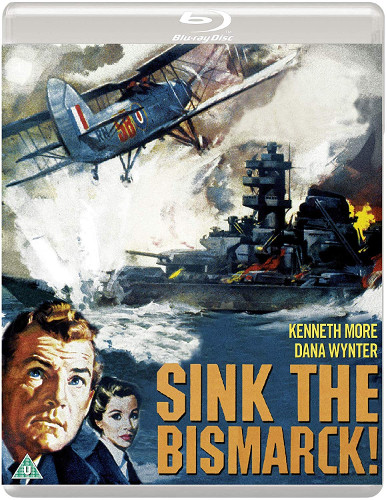

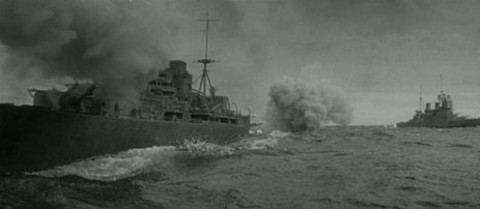

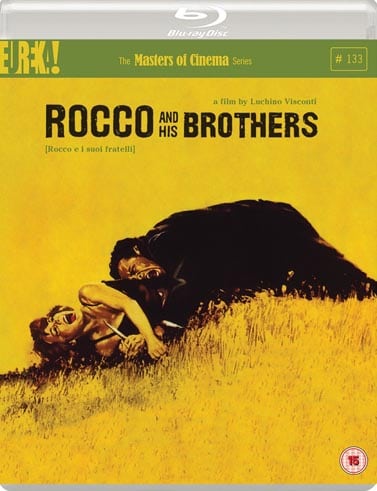
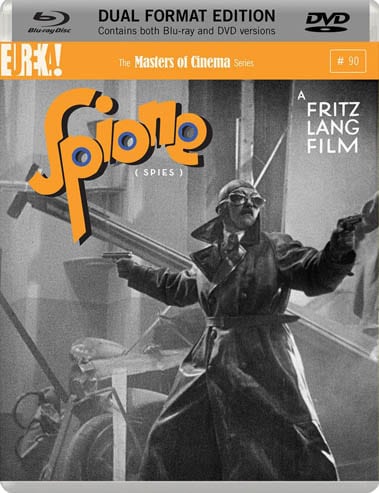
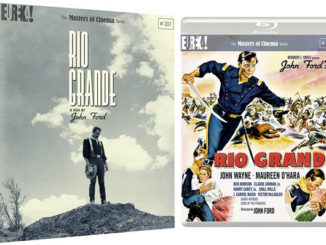
Be the first to comment